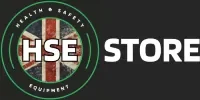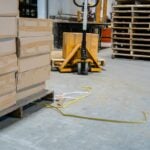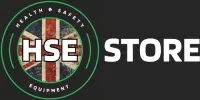Classifications Explained
Theres one important rule to remember above all else when it comes to certifications: If your ladders don’t have them, don’t buy them. *
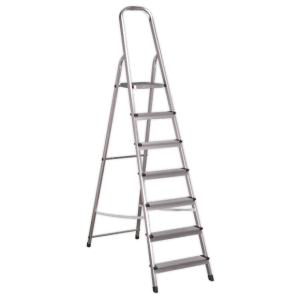
Classifications mean that the ladders you are buying conform to various standards and will perform how those standards dictate they should. They are also minimum acceptable standards, the best quality ladders will always exceed these standards.
Nearly all ladders you will see available must conform to certain certifications apart from specific use cases such as mobile steps (those in warehouses for example), specialist single use ladders (loft access ladders) and fixed access ladders (static roof access ladders).
There are three classifications to be aware of:
- Class 1
- Class EN131
- Class 3
Class 1 Ladders are usually colour coded with a blue label, often around the rubber feet or attached to manufacturer instructions and warning labels. Class I is the strongest and sturdiest type of ladders available and these are designed for heavy industrial use where they can take some punishment and hold up very well. Think of the type of applications such as on building and construction sites, with multiple people using them constantly throughout the day with lots of weight and stress being put on them.
Class EN131 ladders are typically for commercial uses, light trader work and heavy DIY use. Usually colour coded in green or yellow, again in the same location as other ladders, they will hold up very well in settings and trades such as painters and decorators, electricians and so forth. This class is also what we would recommend for using in the home even if its briefly, we will explain why below.
Class 3 ladders are suited only for light domestic tasks and not for any trade, commercial or industrial use. These are again minimum standards, and we do not recommend any of these for the home use simply because Class EN131 is easily affordable and accessible to many people, with a much higher safety rating.
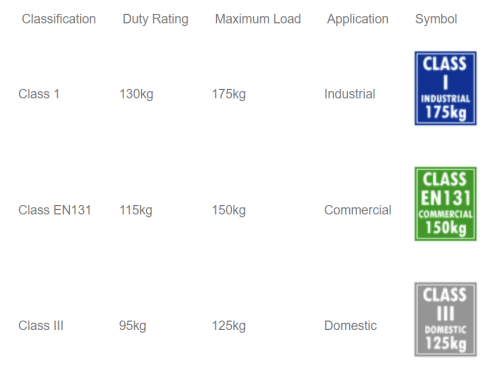
Other Classifications
EN14183:2003 is a certification that applies to steps and stools, and means they conform to a maximum load of 150kg. Look out for this within the product descriptions.
GS Approved indicates that the product carries the Geprüfte Sicherheit (“Safety Tested”) or GS mark, a voluntary certification mark for technical equipment. Any product bearing the GS Mark indicates that it was tested and complies with the minimum requirements of the German Equipment and Product Safety Act (“Geräte- und Produktsicherheitsgesetz“, or “GPSG”), which is recognized throughout EU countries as a symbol of safety and may only be issued by an accredited product safety testing and certification agency.
BS 2037:1994 applies solely to metal and aluminium ladders
BS 1129: 1990 applies solely to timber ladders

Recap FAQ's
What are ladder classifications and certifications for?
Ladder classifications and certifications are there to protect us and the people around us who use the ladders. They are a set of minimum acceptable standards that manufacturers have to conform to.
What are the three ladder classifications?
Class 1 for industrial use, Class EN131 for commerical use, Class 3 for domestic use.
What are Class 1 ladders used for?
Class 1 ladders are the strongest and highest certification. These are for heavy industrial use such as construction sites.
What are Class EN131 ladders used for?
Class EN131 ladders are for commercial use and light trade use. Such applications as builders, electricians, plasterers and painters.
What are Class 3 ladders used for?
Class 3 ladders are solely intended for light domestic use. These we do not recommend to use and do not stock.
What is the colour coding on ladders?
Usually near the rubber feet, or manufacturer instructions and safety labels you will find the colour coded classifications. Blue for Class 1, Green or Yellow for Class EN131, and grey for Class 3.
Further Reading
See our other knowledge base articles on ladder statistics and the law, how to check their safety and how to use them correctly.

